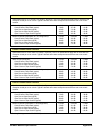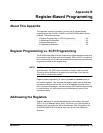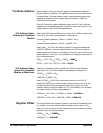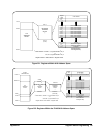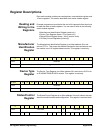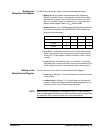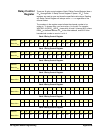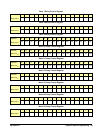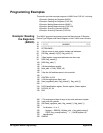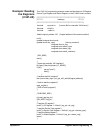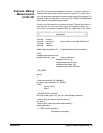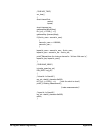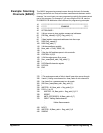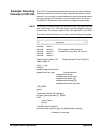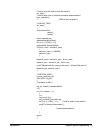
90 Register-Based Programming Appendix B
Programming Examples
This section provides example programs in BASIC and C/HP-UX, including:
• Example: Reading the Registers (BASIC)
• Example: Reading the Registers (C/HP-UX)
• Example: Making Measurements (BASIC)
• Example: Making Measurements (C/HP-UX)
• Example: Scanning Channels (BASIC)
• Example: Scanning Channels (C/HP-UX)
Example: Reading
the Registers
(BASIC)
This BASIC programming example reads the Manufacturer ID Register,
Device Type Register and Status Register on the E1466A matrix module.
10 !*****************************************************
20 ! ****** READREG *****
30 !*****************************************************
40 OPTION BASE 1
50 !
Set up arrays to store register names and addresses
60 DIM Reg_name$(1:3)[32], Reg_addr(1:3)
70 !
80 !
Read register names and addresses into the arrays
90 READ Reg_name$(*)
100 READ Reg_addr(*)
110 !
120 !
Set base address variable
130 Base_addr = DVAL("DE00",16)
140 !
150 !
Map the A16 address space in the controller
160 !
170 CONTROL 16,25;2
180 !
Call the subprogram Read_regs
190 Read_regs(Base_addr, Reg_name$(*), Reg_addr(*))
200 !
210 DATA Identification register, Device register, Status register
220 DATA 00, 02, 04
230 END
.
.
.
300 !
This subprogram steps through a loop that reads each register
310 !
and prints its contents
320 SUB Read_regs(Base_addr, Reg_name$(*), Reg_addr(*))
330 !
340 For Number = 1 to 3
350 Register = READIO(-16,Base_addr + Reg_addr(number))
360 PRINT Reg_name$(number); " = "; IVAL$(Register,16)
370 Next Number
380 SUBEND



